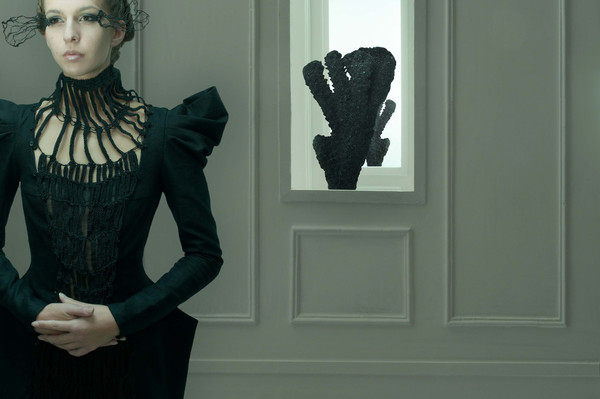b
Laura Mulder’s “The Unreal Reality”
This stunningly beautiful, structural collection, entitled The Unreal Reality, was designed by Laura Mulder as her graduation project at the Art Academy of Utrecht in 2011. Modeled by Thiska van den Heuvel and Lara Aimee, photographed by Cor and Leonie Baauw of Local Androids, with hairstyling by Jenny Kroese.
